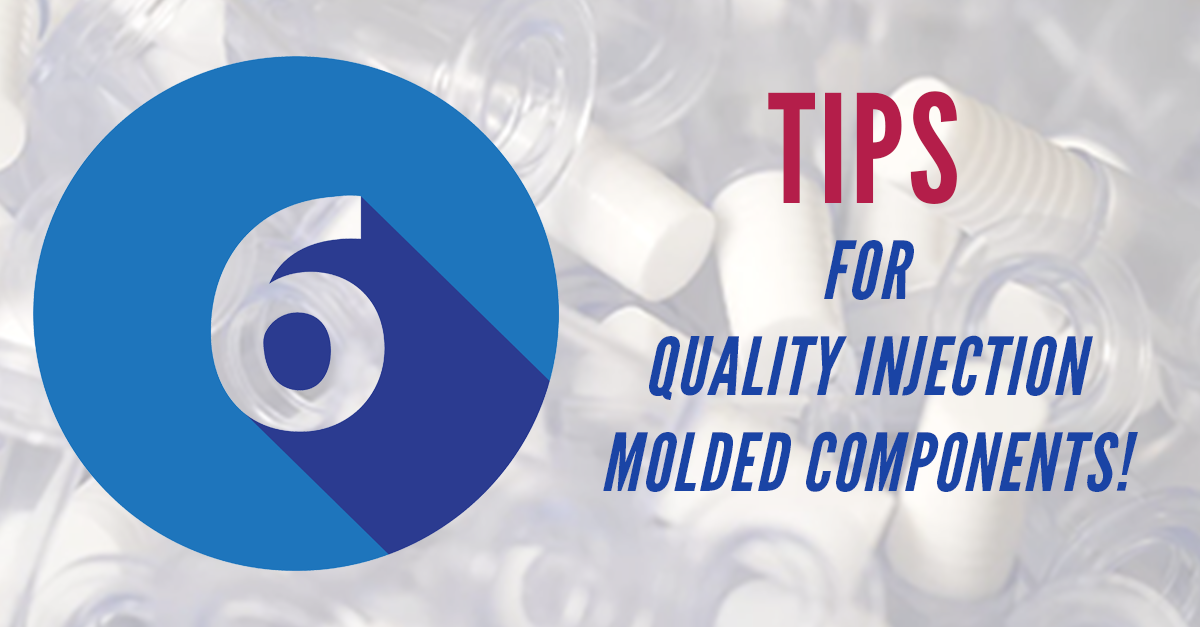The widely used practice of injection molding is a highly versatile and efficient manufacturing process that delivers high-quality plastic components and products. Market segments like defense, medical, and pharmaceutical rely on plastic injection molding to create products and components that use flame retardants, offer chemical resistance, and can be sanitized enough to use in medical devices.
With so much on the line, knowing you have the highest quality injection molding possible is vital. So, consider these best practices when looking for high-quality injection molding services.
Best Practices for Quality Injection Molding
1. Design for High-Quality Injection Molding
The success of your plastic component or device starts with a well-designed injection mold that adheres to the best practices for injection molding. Design for Manufacturability (DFM) is a crucial principle that considers the manufacturing process during the design stage. By selecting an injection molding partner that offers DFM, you will get the following:
- Improved moldability: By considering factors such as part geometry, wall thickness, draft angles, and undercuts, potential design issues can be identified and resolved early on. This results in a more moldable product design with reduced risks of manufacturing defects.
- Cost savings: By addressing manufacturability concerns at the design stage, potential issues that could result in expensive tooling modifications, production delays, or high scrap rates can be avoided, saving you money.
- A faster time-to-market: DFM makes things more efficient, reducing the need for multiple iterations and modifications. This allows you to bring your products to market faster.
- Improved overall product quality: By addressing potential manufacturing challenges and optimizing the mold design, the risk of defects minimizes, resulting in a better high-quality injection mold.
The Role of Design for Manufacturability in Achieving an Optimized Mold Design
The role of DFM can't be overstated when creating a high-quality injection molding product. So, here's a dive into how it works.
A moldability analysis assesses the design's compatibility with the injection molding process.
Design modifications are made to ensure consistent wall thickness, dimensional stability, and easy ejection. The DFM team then controls for other things that could complicate the molding process. It optimizes the mold design by considering the arrangement of mold cavities, cooling channel design, venting, and ejection mechanisms.
The process is further optimized by deciding on the appropriate injection molding parameters, such as injection speed, temperature, and pressure profiles. By fine-tuning these injection molding process parameters, DFM ensures you get the most high-quality injection molding on the market.
2. Managing Risk by Selecting a Qualified Vendor
Choosing the right injection molding company is crucial to ensure high-quality production. You want to look for a vendor with a proven track record, extensive experience in the industry, and a commitment to quality. Consider their technical capabilities, manufacturing processes, quality control measures, and valuable certifications.
It's natural to engage in discussions with a potential injection molding company before deciding. So, ask questions to help you understand their capabilities and assess their ability to meet your specific requirements for injection-molded parts.
3. Quality Assurance and Inspection Techniques
Injection molding services that offer quality assurance and implement proper inspection techniques are more likely to guarantee products that meet your specifications. These two things increase the likelihood of:
- Consistent product quality
- Compliance with specifications
- Defect prevention
- Cost savings
- Brand Reputation
- Risk mitigation
Detecting surface defects before you go into production ensures superior visual surface quality and helps reduce costs by reducing scrap rates, rework, and customer complaints. Additionally, conducting thorough inspections of the mold and produced parts through visual inspection and functional testing ensures adherence to quality standards. It makes your final product safe, effective, and profitable.
4. Material Selection
Not all plastics are made equally, and the right material selection determines your product or component's durability, functionality, and compatibility with the injection molding process. To create the highest quality plastic injection molding, consider the following:
- Mechanical properties: Factors such as tensile strength and impact resistance determine whether or not the final product can withstand its intended purpose.
- Chemical compatibility: Certain applications may involve exposure to chemicals, solvents, oils, or other substances. Knowing this is crucial in selecting a material that exhibits resistance to these chemicals.
- Thermal properties: Melting point, heat resistance, and thermal expansion are critical material considerations in injection molding. Knowing if your plastic injection mold will be subjected to varying temperature and injection speed conditions is part of choosing the right material.
- Regulatory compliance: Specific industries such as automotive or medical have material regulation standards for safety and reliability. Make sure your chosen material meets your product's legal obligation.
For more information on the broad range of materials, click here.
5. Injection Mold Maintenance
In every facet of the manufacturing industry, equipment maintenance is key. Regular maintenance and upkeep of the injection mold is vital for high-quality production, especially over a long period.
Establishing a preventive maintenance program that includes routine inspections and cleaning the injection mold tooling is helpful. Repairs and replacements may become necessary over time. Still, as long as they're done promptly, tooling is more likely to endure, offering high-quality injection molding outputs.
6. Continuous Improvement and Lean Manufacturing
Embracing a culture of continuous improvement and implementing lean manufacturing means encouraging employees to identify and propose process improvements, reduce waste, and optimize cycle times. It also means analyzing process data, collecting operator feedback, conducting root-cause analysis to identify problem areas, and developing the proper injection molding process.
In searching for ways to improve, you may discover that automating some processes will help. Often, automation enables faster and more consistent operation and higher quality due to the minimization of human error.
Choosing a Partner With High-Quality Injection Molding Systems
Crescent Industries specializes in injection molding services. We offer more than just conventional custom injection molding. With over 75 years of experience, our plastic injection molding services produce high-quality plastic components and devices to meet your business needs.
We are ISO 13845:2016 certified, FDA registered, ITAR registered, and utilize Design for Manufacturing. Contact us to learn more about how we can help your business.


